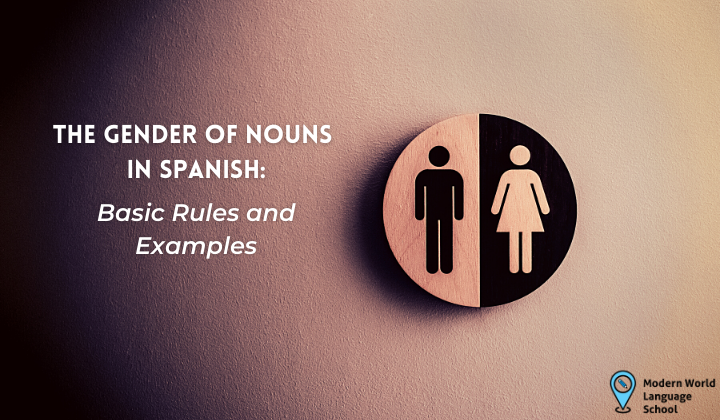
Nouns in Spanish usually have a feminine or masculine form. This interesting feature makes them different compared to the way nouns are used in other languages. To recognize the gender of nouns in Spanish, it is necessary to know some basic rules, so let’s start!
As a general rule, we can recognize the gender of nouns in Spanish by looking at the word termination. Masculine nouns usually end in vowels E or O like PADRE (father) or MAESTRO (teacher). While the feminine words in Spanish end with the vowel A like HERMANA (sister) and CASA (house).
Most of the masculine nouns in Spanish end in the letters -N, -O, -R, -S, -R, -L. Two examples of common masculine words are CORAZON (heart) and CARRO (car). Apart from these endings, some masculine nouns end in the syllables -MA, -PA and -TA, as in the case of the word PROBLEMA and MAPA. You must be careful since there are also some feminine nouns in Spanish CÁRCEL (jail) and MAMÁ (mom) that end in the consonants -L and -MA.
Examples of sentences using masculine nouns in Spanish:



Feminine nouns in Spanish generally end in the letters -A, -DAD, -TAD, -ED, -SION, -CIÓN, -DEZ, -TIS, -IZ and some end in -E as well. Again, these endings are not absolute, so you might find some masculine nouns in Spanish that end in those letters as well.
Examples of sentences using masculine nouns in Spanish:


Finally, some nouns could be masculine or feminine nouns. They are called nouns with ambiguous gender in Spanish. In this case, the article or pronoun that is placed in front of them helps us determine their gender and meaning. The interesting thing about ambiguous nouns is that some change their meaning depending on the article with which they are used. For example, the word CURA seems to be a feminine name, but when the article EL is added and we say “EL CURA” it becomes “a priest”, but if we add the feminine article LA, it becomes “LA CURA” it is “the cure” (for a disease ).
Examples of sentences using masculine nouns in Spanish:
